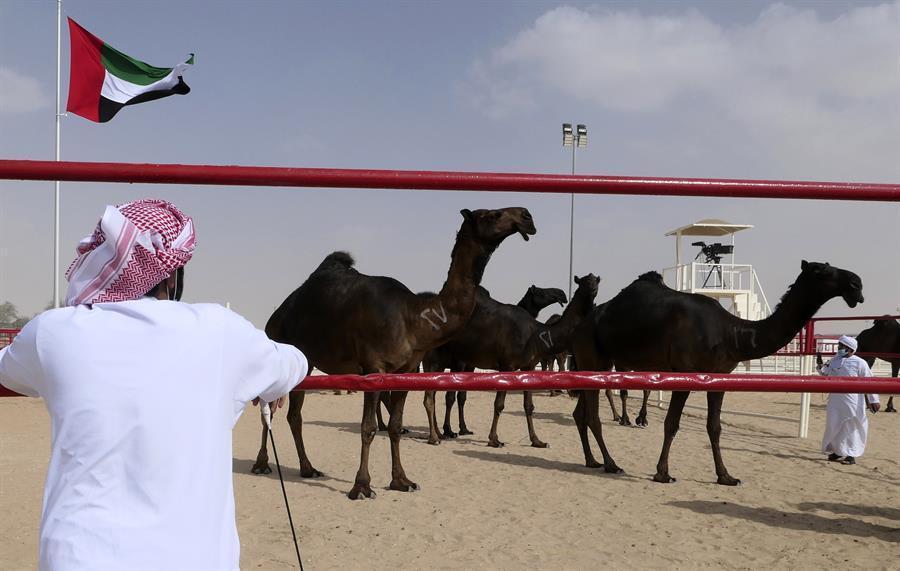
Deep in the desert of the United Arab Emirates (UAE), the moment that camel breeders had been waiting for arrived.
Families hauled their camels through wind-carved sands. Servers poured tiny cups of Arabic coffee. Judges descended on desert lots.
A single question loomed over the grandstand: Which camels were most beautiful?
Even as the Omicron variant rips through the world, legions of breeders from Bahrain, Kuwait, Oman, Saudi Arabia and Qatar traveled to the UAE’s southwestern desert last week with 40,000 of their most beautiful camels for the Al Dhafra Festival. The five-man jury at the annual pageant insists beauty is not in the eye of the beholder. Camel aesthetics are evaluated according to precise categories determined generations ago. Only female camels participate because males fight too much, authorities said.
As hundreds of woolly black camels trotted through the dusty pastures, necks and humps bobbing, one of the organizers, Mohammed al-Muhari, outlined the platonic ideal.
Necks must be long and slim, cheeks broad and hooves large, he told The Associated Press on Wednesday. Lips must droop. They must walk tall with graceful posture.
“It’s not so different from humans,” al-Muhari said, his robe sparkling white amid clouds of dust.
The high standards have prompted many breeders to seek an advantage, using banned Botox injections to inflate the camel’s lips, muscle relaxants to soften the face and silicone wax injections to expand the hump.
Festival spokesman Abdel Hadi Saleh declined to say how many participants had been disqualified over plastic surgery this week. All camels undergo rigorous medical exams to detect artificial touch-ups and hormones before entering Al Dhafra Festival.
Since Emirati investigators began employing X-rays and sonar systems a few years ago, Saleh said the number of cheaters has plummeted.
“We easily catch them, and they realize getting caught, it’s not worth the cost to their reputation,” he said.
A great deal is at stake. Al Dhafra Festival offers the top 10 winners in each category prizes ranging from $1,300 to $13,600. At the main Saudi contest, the most beautiful fetch $66 million. Camels change hands in deals worth millions of dirhams.
But breeders insist it’s not only about the money.
“It is a kind of our heritage and custom that the [Emirati rulers] revived,” said 27-year-old camel owner Saleh al-Minhali from Abu Dhabi. He sported designer sunglasses over his traditional headdress and Balenciaga sneakers under his kandura, or Emirati tunic.
Gone are the days when camels were integral to daily life in the federation of seven sheikhdoms, a chapter lost as oil wealth and global business transformed Dubai and Abu Dhabi into skyscraper-studded hubs with marbled malls, luxury hotels and throbbing nightclubs. Foreigners outnumber locals nearly nine to one in the country.
However, experts say Emiratis are increasingly searching for meaning in echoes of the past, Bedouin traditions that prevailed before the UAE became a nation 50 years ago.
“Younger Emiratis who have identity issues are going back to their heritage to find a sense of belonging,” said Rima Sabban, a sociologist at Zayed University in Dubai. “The society developed and modernized so fast it creates a crisis inside.”